 |
| Sony a6500 | 18-135mm F3.5-5.6 OSS @ 95mm | ISO 100 | F6.3 |
Being a child of the Midwest a hike, in my mind, is more or less walking across land that is mostly flat. There are trees, usually a dirt path, and maybe the occasional hill. A hike in Hawaii, I came to learn recently, can mean something vastly different.
I was in Hawaii on a Sony-sponsored trip along with a handful of other photography journalists, on Oahu for two vastly different shooting experiences: shooting pro golf with the a9, and trying out a new 18-135mm F3.5-5.6 zoom for the a6000-series. I was armed with a TSA-approved 3.4 ounces of sunscreen, a handful of memory cards and a pair of running shoes that prove to be woefully outmatched by the “hike” we’re about to embark on.
My first clue should have been when one member of our party put some spiky, chainmail-type overshoes on top of her street shoes. We walked across a parking lot toward the “trailhead,” a rocky slope where a faint suggestion of a path disappeared into some trees. What followed was 30 minutes of scrambling up a steep incline, grabbing at roots, tree branches and rocks for support. Oh, and did I mention I have a slightly weird thing about heights?
Suddenly, I was quite grateful for the a6500 and the lens’ small size. The whole kit fit easily into a low profile backpack and didn’t provide an extra physical challenge to overcome. Along the way we found a couple of points to stop off, breathe, and take a few photos. Every time we stopped I considered chickening out on the rest of the climb. Nobody would judge me, and I’d get perfectly nice photos from halfway up.
 |
| Sony a6500 | 18-135mm F3.5-5.6 OSS @ 18mm | ISO 100 | F4.5 |
Maybe the morning’s events made me feel bolder (more on that later). Maybe being the only lady journalist on the trip made me hungrier to prove my grit. Maybe it was just the beer I had at lunch giving me some extra courage. I kept going whatever the reason, and I’m pretty darn glad that I did.
 |
| Insert your favorite inspirational quote / rap lyric about making it to the top here.
Sony a6500 | 18-135mm F3.5-5.6 OSS @ 18mm | ISO 200 | F5.6 |
I wouldn’t have wanted to carry a lens/camera combo much bigger than the a6500 and 18-135mm on that hike. For its size, it proved to be a pretty versatile kit. The lens was wide enough for a sweeping view of sunset in the valley, but long enough for a quick shot of a helicopter in the distance when it swooped by unexpectedly. Your standard kit zoom wouldn’t have provided quite as many options.
 |
|
Did you instinctively start humming the Jurassic Park theme when you saw this image? No? You’re a liar. Sony a6500 | 18-135mm F3.5-5.6 OSS @ 90mm | ISO 100 | F5.6 |
I tend to gravitate toward wide lenses and like the convenience of carrying lightweight primes, but I was very happy to have the variety that the telezoom offered. When you’re standing on one 3′ x 3′ rock scared to move left or right for fear of falling to your death, you don’t have too many composition options with a 24mm prime.
As it turns out, that hike wasn’t the only time I contemplated my own mortality that day. Let me tell you about the events of that morning.
 |
We all know now what happened, but when you’re woken up by your phone buzzing with this message (special attention to the part that says THIS IS NOT A DRILL) it makes for a very strange start to the day. The short version of my story is that I spent about 15 minutes in a semi-panic, and having only the tornado drills of my youth to call on for guidance, huddled in my hotel bathroom with a single bottle of water. Not exactly your best shot at surviving a nuclear attack.
I wish I could say I had some kind of profound experience when I found out it was all a mistake. In reality, I just put on some shoes and went downstairs for coffee and a yogurt, and more or less just went about my day. I made time to get into the ocean. That was nice.
A couple of days before the threat of nuclear warfare appeared on my phone, I found myself in a very different state of mind as I tried to photograph professional golf.
 |
| Sony a9 | FE 100-400mm F4.5-5.6 GM OSS @ 121mm | ISO 100 | F5.6 |
Golf is a mysterious game. As opposed to the tennis tournaments and baseball games I’m familiar with, the action happens all around you. I’ve thought of it as a game with a leisurely pace, but trying to photograph it for the first time, I’m amazed at how quickly the action unfolds. You have to get into position, pray that a caddy doesn’t step into your way at the last moment, and you only have a few seconds to get your shot before it’s all over. Oh, and you have to keep in mind the direction of the sun, ugly things like trash cans creeping into your backgrounds, and woe betide you if you make even a peep as a golfer prepares to swing a club – you’ll be swiftly escorted off the grounds.
“Game changer” has become sort of a joke around the office since it’s a phrase that’s been used to death and rarely lives up to its meaning. But if you’re a golf photographer, you really could consider the a9 to be a game changer. Plenty of resolution, 20 fps and silent shutter – particularly that last bit – is huge for a sport where silence isn’t just golden, it’s mandatory. Jeannette Moses noted this revelation when she photographed the Presidents Cup last year with the a9. I’ve seen it firsthand too, and it really is strange to be so close to a professional golfer raising his club to strike the ball while firing away at 20 fps.
 |
| Sony a9 | FE 100-400mm F4.5-5.6 GM OSS @ 100mm | ISO 100 | F5.6 |
Sony’s making a clear appeal to pro sports photographers with the a9, and before we set foot on the golf course we got a primer on the company’s efforts to bolster its offerings with Pro Support. If you aren’t familiar, this is a program for working photographers that aims to put Sony on even footing with Canon and Nikon.
Sony Pro Support members pay a $ 100 annual fee that entitles them to 24/7 phone and email support and access to service centers in Los Angeles and New York. If you need to send a product in for a fix, Sony claims a three-day turnaround with free loaner gear to cover repairs that take longer. To qualify, photographers must own at least two full-frame Sony bodies, three lenses and must be actively earning income from their photography.
For comparison, Nikon uses a point system and requires at least two camera bodies and two lenses. The system is tiered, but all levels include priority repairs, repair loans and discounts on repairs. Canon also uses a point-based tiered system, but doesn’t require a certain number of lenses or bodies.
I’m by no means a pro, and shooting golf proves to be a much more challenging experience than I was anticipating. An afternoon carrying two camera bodies, one of them with a sizable 100-400mm lens attached, was a fairly taxing endeavor. I also put my finger on the shutter too gingerly a few times, and with 20 fps silent shutter it’s easy to end up with hundreds of photos you didn’t mean to take. From over 3000 (!) images, I managed to scrape together a handful I feel comfortable putting my name next to. Not exactly a stellar hit rate.
Sony Open gallery
$ (document).ready(function() { SampleGalleryV2({“containerId”:”embeddedSampleGallery_8041997224″,”galleryId”:”8041997224″,”isEmbeddedWidget”:true,”selectedImageIndex”:0,”isMobile”:false}) });
I have a renewed appreciation for the tough job pro sports photographers have, and a respect for Hawaii’s lovely-yet-dizzying hiking trails. I also jump out of my seat now when my phone buzzes too loudly and I’m finally getting serious about putting together an earthquake preparedness kit. But my feeling of having stretched myself as a photographer, and I suppose as a hiker, outweighs my sense of distress over the whole thing. And if you’re going to survive a fake nuclear missile attack, there are worse places to experience it than Hawaii.
Sony 18-135mm F3.5-5.6 OSS sample gallery
$ (document).ready(function() { SampleGalleryV2({“containerId”:”embeddedSampleGallery_3207546459″,”galleryId”:”3207546459″,”isEmbeddedWidget”:true,”selectedImageIndex”:0,”isMobile”:false}) });
Articles: Digital Photography Review (dpreview.com)














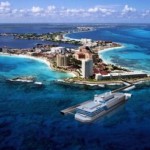
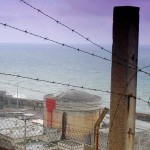
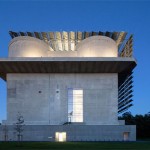








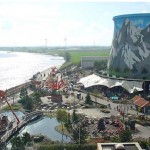
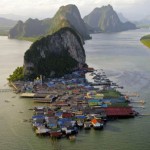
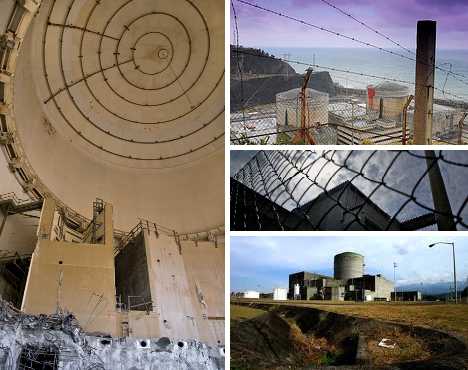











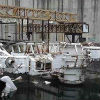
You must be logged in to post a comment.